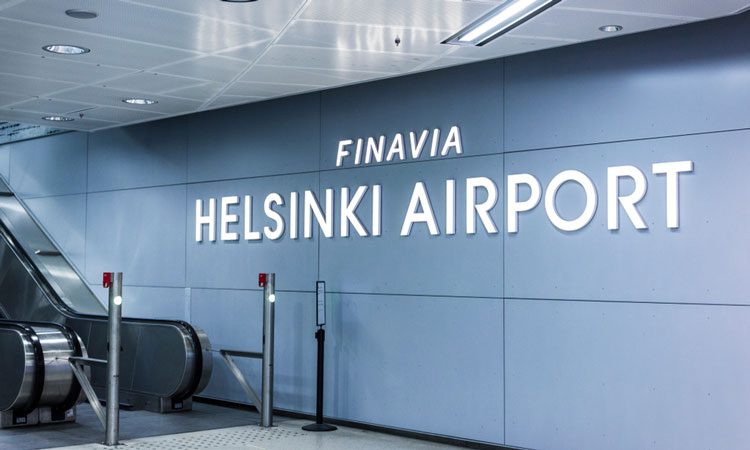An easy, smooth and Finnish travel experience at Helsinki Airport
- Like
- Digg
- Del
- Tumblr
- VKontakte
- Buffer
- Love This
- Odnoklassniki
- Meneame
- Blogger
- Amazon
- Yahoo Mail
- Gmail
- AOL
- Newsvine
- HackerNews
- Evernote
- MySpace
- Mail.ru
- Viadeo
- Line
- Comments
- Yummly
- SMS
- Viber
- Telegram
- Subscribe
- Skype
- Facebook Messenger
- Kakao
- LiveJournal
- Yammer
- Edgar
- Fintel
- Mix
- Instapaper
- Copy Link
Posted: 3 May 2021 | Nora Immonen, Tuomo Lindstedt | 1 comment
Finavia colleagues Nora Immonen, Vice President and Director of Commercial Business, and Tuomo Lindstedt, Project Manager, detail the projects that have been driving forward development at Helsinki Airport, all aimed at increasing capacity, removing complexities and, ultimately, creating a smooth, Finnish passenger experience.


The majority of projects underneath the Helsinki Airport (HEL) development programme umbrella have either been finished or are close to being finished. By the end of 2021, the new arrivals and departures hall will be finished, and the renovations of the existing terminal have also started a year ahead of schedule.
In terms of costs, the renovation of the existing terminal is one of the smallest parts of the programme. However, because it is being undertaken in an actively operational terminal – right alongside passenger routes – it’s actually relatively complex.
A phased approach for minimal disruption
In order for the airport to remain fully operational while we work on the renovations, we opted to execute the programme in phases. That’s why we have invested so much time in the project relative to the larger construction parts of the programme.
We began the development project in 2013 to address the rapidly increasing number of passengers flowing through the premises”
We began the development project in 2013 to address the rapidly increasing number of passengers flowing through the premises. When construction first started in 2016, we had identified the main cause of increasing demand as the rising number of transfer passenger numbers from Asia.
In order to meet this rise in demand, we needed to expand. The expansion programme contains multiple projects, but the two major ones are the increasing of transfer capacity for the non-Schengen terminal extension; and the increasing of capacity and space for landside operations and services in the Schengen terminal area.
With two years remaining, the airport development programme has had minimal effect on passengers and operations, is ahead of schedule and is within budget. We feel that those operational objectives are well under control.
The latest milestone in the programme
The new parking facility was completed in 2020 and has marked a huge accomplishment for the project team. The old facility was demolished to make space for the new arrivals and departures halls. In total, the new parking facility took one and a half years to execute, and the facility contains about 1,800 parking spaces. It’s now ready and waiting for when passenger demand begins to rise again.
As each phase in the development programme is completed, customer experience will improve. The West Pier area of the airport – the extension to the non-Schengen terminal part – is the latest example and has been fully put into use.
As each phase in the development programme is completed, customer experience will improve”
In the new terminal building, various modes of transport will be made more accessible, and there will be a shorter connection to the railway than there was previously. Coming to and from the airport will also be more straightforward in general.
Despite the substantial effect that the coronavirus pandemic has had on the travel industry, we have done our best to find opportunities in the situation where we can. As passenger traffic has been as much as 90 per cent lower than normal volumes, this has enabled us to renovate more quickly and more intensely than we might have been able to otherwise, for example.
We are confident that the pandemic will subside and that demand for travel will rise again. When it does, Helsinki Airport will be ready to meet that demand with a better passenger experience and new facilities, and the programme is due to be fully completed by 2023.
Working to make travel even smoother
For passengers, Helsinki Airport is a modern airport that makes travelling feel easy and simple, spacious and well-managed. Our strategy has always been to maximise that feeling, and the airport development programme has supported that and will continue to do so in the future.
For passengers, Helsinki Airport is a modern airport that makes travelling feel easy and simple, spacious and well-managed”
The renovation work being done to simplify the airport’s baggage reclaim process is a good example of how we are making travel smoother for passengers. In the past, there have been two reclaim halls in Terminal 2 (T2), which have had the potential to cause confusing situations. Soon, those two reclaim halls will be merged into a single hall.
When this merger happens, people coming to meet or greet passengers won’t have to wonder if they’re in the correct place. There will only be one place to be. In the past, the baggage reclaim process has suffered from bottlenecks, but it will soon be bigger, more free-flowing and more efficient.
A stronger commercial offering
Finavia has worked for years to build a strong and consistent brand based on customer processes, health and safety measures and smoothness. This work has proven to be successful, reflected in Helsinki Airport being recently selected as the best European airport of its size category for 2020.
The award feels like a big achievement for all of us at Helsinki Airport, as we managed it even with renovations going on. We would say that Helsinki Airport won this award because it is efficient, clean and, above all, a smooth experience. The aim of the development programme is, and always has been, to make that experience even smoother.
From a customer and staff perspective, commercial landside services at the new T2 will be combined and positioned alongside customer flows, with the intention of creating an even more straightforward travel experience for passengers.
Finavia has worked for years to build a strong and consistent brand based on customer processes, health and safety measures and smoothness”
The new landside extension will have a strong commercial offering for both departing and arriving passengers and airport community staff. The extension will boast new restaurants, cafes and bars and on-the-go food options, as well as a new food hall area, complete with upcoming local street and casual food outlets.
On top of food services, there will also be the arrivals lounge and business centre (operated by Plaza Premium Group); health- and beauty-related services; 24/7 convenience stores; and a larger and improved supermarket, on top of all of the services that you might expect to normally find, such as car rental, travel services, seasonal accessories and currency exchange.
In the extended Schengen gate area, we will strengthen our offering with increased local and international food and beverage services, increase the visibility and presence of strong Finnish and international retail brands and create interesting and exciting experience areas following the theme of Finnish nature and forests.
Incorporating Finnishness into airport design
One of our more aesthetic objectives has been for the development project to reflect ‘Finnishness’. That can mean many different things, but, in this case, we wanted to focus on Finnish nature and to incorporate it into the new design. Since wood is important in Finnish nature, for example, we will have a wooden ceiling in the new terminal.
Likewise, one of the first things that passengers see when entering Finland is a nature element called Luoto, which is like a rock or an islet, and even this is reflected in the design of the terminal.
Our ultimate vision is for Helsinki Airport to be a fantastic business card for Finland, for people to take happy memories of Finland with them when they leave”
The landside extension has a lot of Finnishness and touches of nature within it, but it is also function-oriented and has been optimised for smooth travel and efficiency, which reflects Finnishness, as well. After we open the landside building at the end of 2021, we will gradually move landside functions in there.
When we make this move, we will be creating more space there for further Finnish services and experiences. So, our ultimate vision is for Helsinki Airport to be a fantastic business card for Finland, for people to take happy memories of Finland with them when they leave. That would be the biggest achievement of all for us.




Related topics
Airport construction and design, Airside operations, Capacity, COVID-19, Passenger experience and seamless travel, Passenger volumes, Retail, Terminal operations



















Hi!
I love the way how you describe the hurdles and their solutions to make our Helsinki tour comfortable. Thanks again